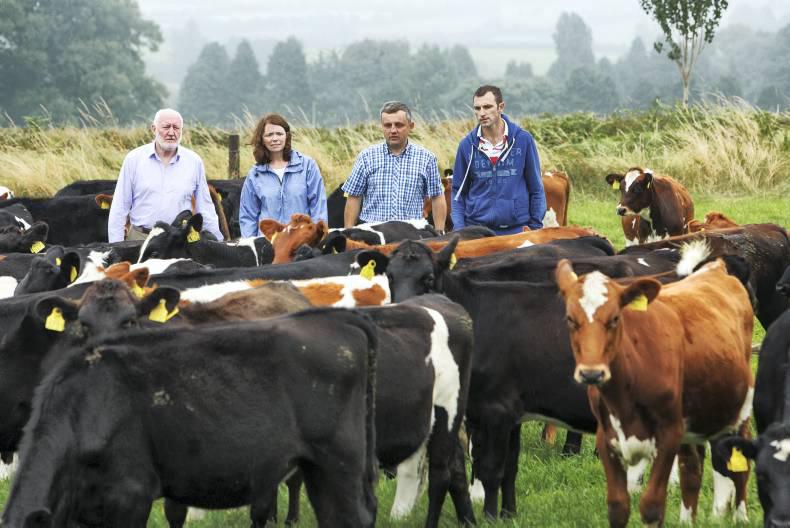For many farmers, rearing calves is the most stressful and labour-intensive aspect of the spring. Training calves to drink, dealing with sick calves, fighting a disease outbreak and putting up with losses is extremely stressful for the farmer. I know of many farmers with 40 or 50 cows who will not increase cow numbers further, simply because they are overwhelmed by calf rearing.
So, how do owners of large herds manage? Shane Fitzgerald, the winner of the 2015 Heifer Rearer of the Year award, is having an open day on his farm this Wednesday 7 September.
Shane calved down 267 cows this spring and 261 calves were born live. Just over 83% of the herd calved in six weeks. Of the live calves, 115 were retained as replacement heifers and the bull calves were sold at two weeks of age. The average age of the heifers that calved for the first time this spring was 23 months.
A lot of the problems with calves are due to poor practices around colostrum, inadequate feeding, poor housing and bad hygiene. But having good calves is only the first step; the ultimate goal is to get the heifers to calve down on target weight at 24 months or less. To achieve this, Shane has a good system in place.
Newborn calves are snatched after birth; moved to straw-bedded calf pens and have their navel disinfected. There, they are fed pooled colostrum as soon as possible. This colostrum is taken from cows that are tested negative for Johne’s disease. Each calf is offered six litres – typically five litres is consumed. The colostrum is fed with a stomach tube.
Once sucking from a teat, they are moved to a pen of up to 30 calves and fed using a computerised feeder. They are offered Calfage, hay and meal. Last year, the heifers consumed about two bags of 26% protein milk replacer each. The mostly Jersey crossbred calves were weaned at 65 days or when they reached 85kg to 90kg liveweight.
After weaning, calves are put to grass and split into lighter and heavier groups. The heavier calves are fed at 1kg to 2kg per head per day until late May and then receive no more meal. Lighter calves continue to get meal until they catch up with the heavier calves. As they do so, they are drafted out and put with the heavier calves.
In their first winter, the heifers graze rape and bale silage. The lighter heifers are turned out to grass in January and the rest go out in February where they are rotationally grazed with no meal until housing the following November. Shane weighed the 115 calves last week and their average weight was 175kg, while the average weight of the 67 in-calf heifers is 452kg – both groups are well on target.
Shane Fitzgerald is farming at Ballynoe in Co Cork, southeast of Fermoy. The farm walk starts at 11am and directions are signposted. There are speakers from Teagasc, Volac and AHI at the walk.






 This is a subscriber-only article
This is a subscriber-only article











SHARING OPTIONS: